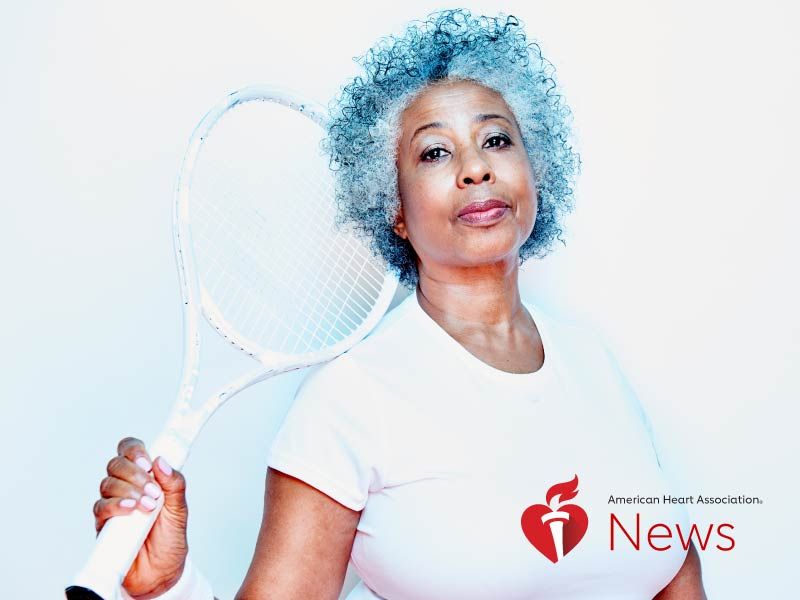AHA News: Scared to Exercise After a Heart Attack? It's Probably Scarier If You Don't

THURSDAY, April 18, 2019 (American Heart Association News) -- Exercise is good for you. But for people who have had a heart attack, starting or resuming a workout routine may sound scary, exhausting, complicated -- in short, the last thing they'd want to do. Instead, it probably should be one of the first.
"We're trying to make it clear that exercise is as much a part of the standard of care as aspirin or statins or beta blockers," said cardiologist Dr. Benjamin D. Levine, director of the Institute for Exercise and Environmental Medicine and a professor of medicine and cardiology at UT Southwestern Medical Center in Dallas.
That hasn't always been the case, said Kate Traynor, director of the cardiac rehabilitation program at Massachusetts General Hospital's Corrigan Minehan Heart Center.
"When I was a nurse in the 1970s, I can remember they kept people in bed after heart attacks," said Traynor, who is also president of the American Association of Cardiovascular and Pulmonary Rehabilitation. Now, she said, patients are up walking soon after surgery.
Research abounds on the benefits. A recent Swedish study found heart attack survivors who identified as "constantly active" had a 71 percent lower risk of death than the "inactive" participants. A 2017 review of research found heart attack survivors who receive cardiac rehab were 53 percent less likely to die from any cause and 57 percent less likely to die from heart-related causes than survivors who did not get cardiac rehab.
"Exercise preserves the strength and flexibility of the heart and enables blood vessels to relax," Levine said. "It helps improve lipids and blood pressure and reduces cardiovascular strain during daily activities."
A major key to reaping the benefits of exercise is incorporating it into a lifelong habit.
"Sometimes people have an epiphany after a heart attack and that makes it easier for them to come around in their lifestyle," Traynor said. "But many people after a heart attack are just not really ready yet."
Maybe they're depressed or afraid to make changes, experts say.
"What I think is that people are frightened after a heart attack, and they're not sure what they're capable of doing, whether recreational exercise, occupational exercise, even sexual relations," Levine said.
That's where cardiac rehabilitation can help, he said.
"Everyone who has a heart attack should go through a period of cardiac rehabilitation. It helps people get past that initial fear and get control of all the risk factors within a multidisciplinary approach after a cardiovascular event."
In cardiac rehab, cardiologists, cardiac nurses, physical therapists, exercise specialists, mental health counselors and nutritionists team up to support each patient. And thus, Traynor said, reduce the risk of another heart attack.
Starting small leads to attainable goals, she said. "We help them have successes being on the treadmill or bike and feeling, 'OK, maybe there's more to this.' It becomes more self-fulfilling and keeps them going."
Unfortunately, only about a third of heart attack survivors report receiving cardiac rehab, according to the Centers for Disease Control and Prevention.
In Dallas, the cardiac rehab clinic at Parkland Health & Hospital System recently added high-intensity interval training (HIIT) -- short bursts of activity with short rest periods -- for heart disease patients who meet certain criteria. With HIIT, 15-minute sessions can be as effective as 60 minutes of a lower-intensity workout, according to some studies.
HIIT helped Parkland patient Jesus Rodrigo Sanchez feel better and to believe in himself. The 60-year-old, who has a family history of heart disease, had bypass surgery in December.
"It was hard at first," said Sanchez, who bought an elliptical machine to use at home, "but the rehab staff promises they won't give you anything you can't do. I didn't believe I could, but now I'm walking 2.8 mph at level 4 incline."
For patients whose doctor has not recommended cardiac rehab, Levine suggests they ask for a referral. "Exercise is just really important to aid return to a normal life."

The news stories provided in Health News and our Health-E News Newsletter are a service of the nationally syndicated HealthDay® news and information company. Stories refer to national trends and breaking health news, and are not necessarily indicative of or always supported by our facility and providers. This information is provided for informational and educational purposes only, and is not intended to be a substitute for medical advice, diagnosis, or treatment.

